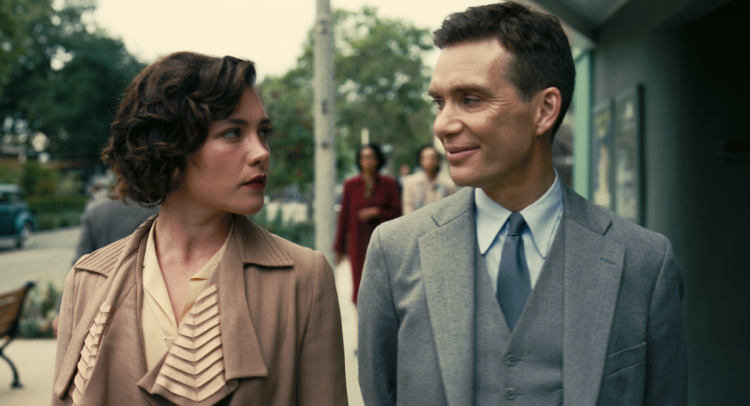Kitty Oppenheimer: The Life and Legacy of J. Robert Oppenheimer’s Partner

the history surrounding the Manhattan Project and the life of her husband, J. Robert Oppenheimer, the so-called “father of the atomic bomb.” As a central figure in the social and scientific circles of mid-20th century America, Kitty’s life offers an intriguing narrative of personal struggle, resilience, and the intersection of science and politics. This article explores her early life, her relationship with Oppenheimer, and her role during and after the atomic age, delving into the complexities of her character and contributions.
Early Life and Education
Kitty Oppenheimer was born on April 8, 1910, in the small town of Changchun, China, to American missionaries. Her early childhood was spent in a highly intellectual environment, imbued with the values of education and service. In 1915, her family returned to the United States, settling in California, where Kitty’s formative years began.
Growing up in a diverse and multicultural society, she developed an appreciation for literature, languages, and the arts. This passion led her to attend the University of California, Berkeley, where she initially studied chemistry. However, she later shifted her focus to the arts, eventually graduating with a degree in literature. This educational background would serve as a strong foundation for her social connections and her ability to engage with the intellectual elite of her time.
Meeting J. Robert Oppenheimer
Kitty met J. Robert Oppenheimer at a gathering in 1939, where their mutual interests in science and the arts quickly drew them together. At the time, Oppenheimer was an esteemed physicist, already making waves in theoretical physics. Kitty, a striking and charismatic woman, quickly became a prominent figure in his life. Their relationship blossomed rapidly, leading to a whirlwind romance.
Despite her interest in science, Kitty’s personality contrasted with Oppenheimer’s often intense and serious demeanor. She brought warmth, vibrancy, and a deep sense of empathy into their relationship. Their marriage on November 1, 1940, marked the beginning of a partnership that would profoundly impact both their lives and the broader historical context.
Life During the Manhattan Project
When the United States entered World War II, the urgency for scientific advancement intensified, culminating in the creation of the Manhattan Project. This ambitious endeavor aimed to develop atomic weapons to end the war. J. Robert Oppenheimer was appointed as the scientific director at Los Alamos, New Mexico, where the project was primarily conducted.
Kitty found herself thrust into the role of a supportive partner during this tumultuous period. As the project unfolded, she navigated a world filled with secrecy and tension, balancing her responsibilities as a wife and the social duties that came with her husband’s high-profile position. Kitty hosted numerous social gatherings for scientists, military officials, and their families, fostering a sense of community among those involved in the project. These gatherings were vital for morale, providing moments of respite amidst the weight of their work.
However, life at Los Alamos was not without its challenges. The secrecy surrounding the Manhattan Project created a rift between Kitty and her husband at times. J. Robert was often absorbed in his work, leading to feelings of isolation for Kitty. The pressure of the project, coupled with the need to maintain a façade of normalcy, placed a strain on their marriage. Nonetheless, Kitty remained devoted to her husband and supportive of his endeavors.
The Atomic Bomb and Its Aftermath
The successful detonation of the first atomic bomb on July 16, 1945, marked a pivotal moment in history. It was a triumph of science, but it also brought with it profound moral and ethical implications. Kitty, like many others, was conflicted about the use of atomic weapons. The bombings of Hiroshima and Nagasaki in August 1945 further complicated these feelings.
After the war, J. Robert Oppenheimer faced intense scrutiny as the political landscape shifted. As the scientific community grappled with the implications of nuclear weapons, Kitty stood by her husband, supporting him as he navigated the challenges posed by a society grappling with the consequences of its actions. She became an important advocate for the responsible use of nuclear energy, emphasizing the need for ethical considerations in scientific advancements.
However, the post-war period also brought personal challenges for Kitty. As J. Robert’s reputation became increasingly polarized, he faced allegations of being a communist sympathizer during the Red Scare. This period of scrutiny and suspicion took a toll on their family life, creating stress and anxiety. Kitty, fiercely protective of her husband, often became embroiled in the political battles that surrounded him, defending his character and contributions to science.
Kitty’s Advocacy and Activism
Despite the challenges she faced, Kitty Oppenheimer emerged as a passionate advocate for social justice and nuclear disarmament. She used her voice to speak out against the proliferation of nuclear weapons and the arms race that ensued during the Cold War. Her activism reflected a broader concern for humanity, emphasizing the need for dialogue, diplomacy, and cooperation among nations.
Kitty’s engagement in social causes extended beyond nuclear disarmament. She was also deeply committed to civil rights, women’s rights, and education. Her involvement in various organizations and initiatives showcased her belief in the power of education and advocacy to effect meaningful change. She understood the importance of harnessing knowledge and dialogue to address pressing global issues.
Later Years and Legacy
In the years following her husband’s death in 1967, Kitty continued to uphold his legacy while forging her own path. She became an influential figure in academia, serving on various boards and committees dedicated to education and social justice. Her work in these areas reflected her unwavering commitment to the principles of equality, justice, and the responsible use of science for the betterment of humanity.
Kitty’s personal journey was not without its hardships. She faced the challenges of widowhood and the emotional toll of living in the shadow of her husband’s significant legacy. Yet, she persevered, becoming a source of strength for her family and an inspiration to those who crossed her path. Her resilience in the face of adversity illustrated her character and determination to advocate for causes she believed in.
Conclusion: A Woman of Strength and Complexity
Kitty Oppenheimer was more than just the wife of J. Robert Oppenheimer; she was a woman of strength, complexity, and intellect. Her life journey mirrored the tumultuous history of the 20th century, marked by scientific advancements, moral dilemmas, and social upheaval. Kitty’s legacy as an advocate for nuclear disarmament, social justice, and education serves as a reminder of the essential role women played in shaping the narrative of the atomic age.





